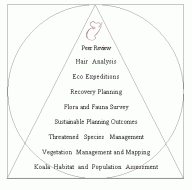Over a more than 40-year career in koala conservation and management, Steve Phillips has learnt a thing or two about koalas. This podcast, done under the umbrella of the NATURA-Pacific 'Back from the Brink' series, provides a potted history of Steve's engagement with koalas, and discusses the future ahead of this iconic animal, our history of engagement with it, the ongoing impacts and implications of climate change, the politics of apathy, and what we as a society must do if we are to save koalas for future generations.
![]()



